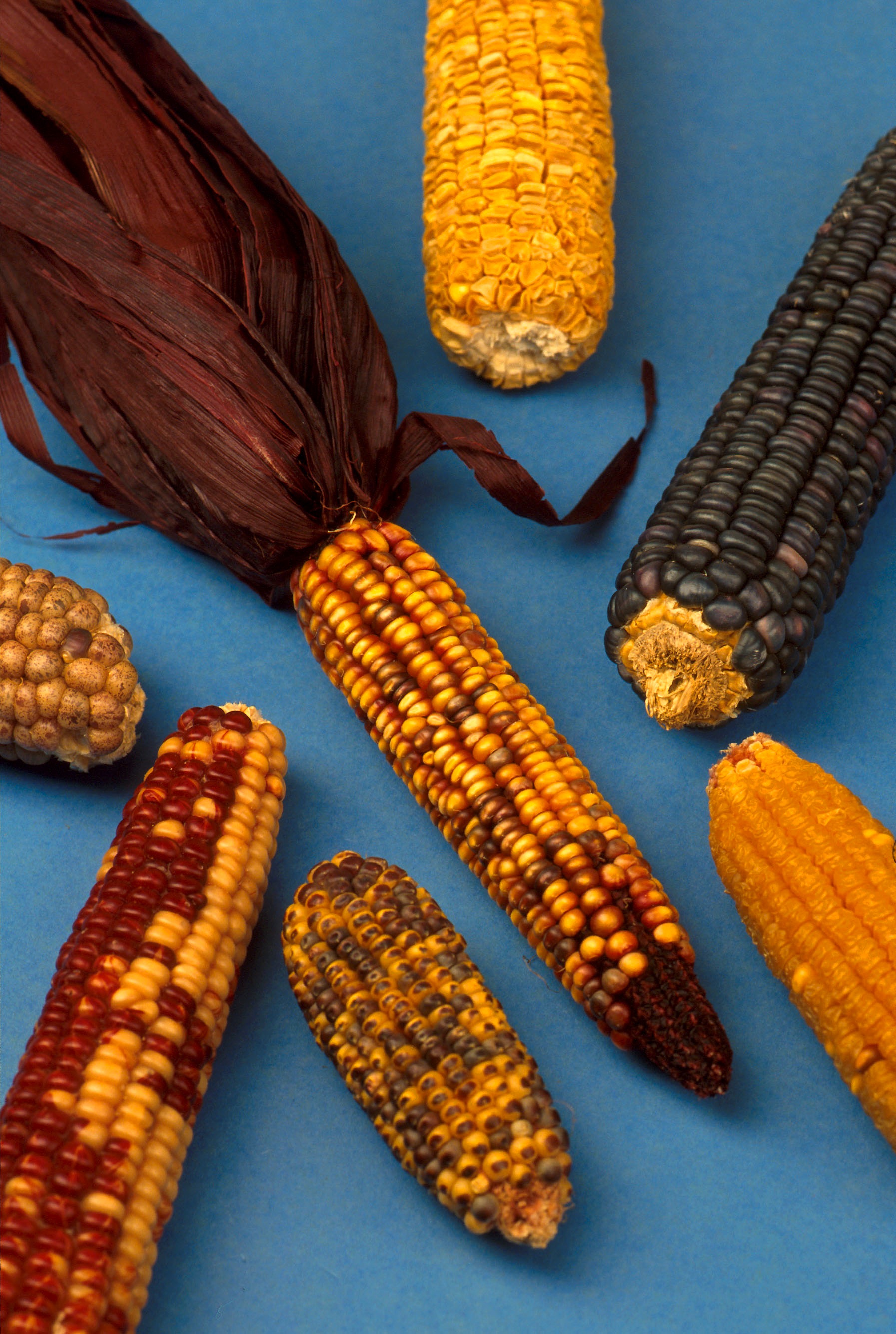|
Milpa
In agriculture, a milpa is a field for growing food crops and a crop-growing system used throughout Mesoamerica, especially in the Yucatán Peninsula, in Mexico. The word ''milpa'' derives from the Nahuatl words ''milli'' and ''pan''. Based on the agronomy of the Maya and of other Mesoamerican peoples, the ''milpa'' system is used to produce crops of maize, beans, and squash without employing artificial pesticides and artificial fertilizers. The land-conservation cycle of the milpa is two years of cultivation and eight years of laying fallow. In the Mexican states of Jalisco and Michoacán and in central Mexico as well as Guanacaste Province Costa Rica, as an agricultural term ''milpa'' denotes a single corn plant; in El Salvador and Guatemala, ''milpa'' specifically refers to harvested crop of maize and the field for cultivation. The concept of ''milpa'' is a sociocultural construct rather than simply a system of agriculture. It involves complex interactions and relationship ... [...More Info...] [...Related Items...] OR: [Wikipedia] [Google] [Baidu] |
Milpitas, California
Milpitas (Spanish for or little cornfields) is a city in Santa Clara County, California, part of Silicon Valley and the broader San Francisco Bay Area. Located on the eastern shore of San Francisco Bay, it is bordered by San Jose, California, San Jose to the south, Fremont, California, Fremont to the north, and the Coyote Creek (Santa Clara County), Coyote Creek and Calaveras Reservoir to the west. As of the 2020 United States census, 2020 census, the city population was 80,273. The city is located at the junction of Interstates Interstate 680 (California), 680 and Interstate 880 (California), 880 and is served by the Milpitas Transit Center, Milpitas BART station. Historically inhabited by the Ohlone people, the area served as a crossroads between Mission San José de Guadalupe in present-day Fremont and Mission Santa Clara de Asis in present-day Santa Clara. The city’s modern development began in the mid-20th century, driven by postwar suburbanization and its incorporation i ... [...More Info...] [...Related Items...] OR: [Wikipedia] [Google] [Baidu] |
Mucuna
''Mucuna'' is a genus of around 110 accepted species of vines and shrubs of the Family (biology), family Fabaceae: tribe Phaseoleae, typically found in tropical and subtropical forests in the Americas, sub-Saharan Africa, southern, southeastern, and eastern Asia, New Guinea, Australia, and the Pacific Islands. The leaves are trifoliolate, alternate, or spiraled, and the flowers are pea-like but larger, with distinctive curved petals, and occurring in racemes. Like other legumes, ''Mucuna'' plants bear pods. They are generally bat-pollinated and produce seeds that are buoyant sea-beans. These have a characteristic three-layered appearance, appearing like the eyes of a large mammal in some species and like a hamburger in others (most notably ''Mucuna sloanei, M. sloanei'') and giving rise to common names like deer-eye beans, donkey-eye beans, ox-eye beans, or hamburger seed. The name of the genus is derived from ''mucunã'', a Tupi–Guarani languages, Tupi–Guarani word for these ... [...More Info...] [...Related Items...] OR: [Wikipedia] [Google] [Baidu] |
Agriculture In Mesoamerica
Agriculture in Mesoamerica dates to the Archaic period of Mesoamerican chronology (8000–2000 BC). At the beginning of the Archaic period, the Early Hunters of the late Pleistocene era (50,000–10,000 BC) led nomadic lifestyles, relying on hunting and gathering for sustenance. However, the nomadic lifestyle that dominated the late Pleistocene and the early Archaic slowly transitioned into a more sedentary lifestyle as the hunter gatherer micro-bands in the region began to cultivate wild plants. The cultivation of these plants provided security to the Mesoamericans, allowing them to increase surplus of " starvation foods" near seasonal camps; this surplus could be utilized when hunting was bad, during times of drought, and when resources were low. The cultivation of plants could have been started purposefully, or by accident. The former could have been done by bringing a wild plant closer to a camp site, or to a frequented area, so it was easier to access and collect. The latt ... [...More Info...] [...Related Items...] OR: [Wikipedia] [Google] [Baidu] |
Nahuatl
Nahuatl ( ; ), Aztec, or Mexicano is a language or, by some definitions, a group of languages of the Uto-Aztecan language family. Varieties of Nahuatl are spoken by about Nahuas, most of whom live mainly in Central Mexico and have smaller populations Nahuatl language in the United States, in the United States. Nahuatl has been spoken in central Mexico since at least the seventh century CE. It was the language of the Mexica, who dominated what is now central Mexico during the Late Postclassic period of Mesoamerican chronology, Mesoamerican history. During the centuries preceding the Spanish conquest of the Aztec Empire, the Aztecs had expanded to incorporate a large part of central Mexico. Their influence caused the variety of Nahuatl spoken by the residents of Tenochtitlan to become a prestige language in Mesoamerica. Following the Spanish conquest, Spanish colonists and missionaries introduced the Latin script, and Nahuatl became a literary language. Many chronicles, gram ... [...More Info...] [...Related Items...] OR: [Wikipedia] [Google] [Baidu] |
Chili Pepper
Chili peppers, also spelled chile or chilli ( ), are varieties of fruit#Berries, berry-fruit plants from the genus ''Capsicum'', which are members of the nightshade family Solanaceae, cultivated for their pungency. They are used as a spice to add pungency (spicy heat) in many cuisines. Capsaicin and the related Capsaicin#Capsaicinoids, capsaicinoids give chili peppers their intensity when ingested or topical application, applied topically. Chili peppers exhibit a range of heat and flavors. This diversity is the reason behind the availability of different types of chili powder, each offering its own taste and heat level. Chili peppers originated in Central or South America and were first cultivated in Mexico. European explorers brought chili peppers back to the Old World in the late 16th century as part of the Columbian Exchange, which led to the cultivation of List of Capsicum cultivars, multiple varieties across the world for food and traditional medicine. Five ''Capsicum'' sp ... [...More Info...] [...Related Items...] OR: [Wikipedia] [Google] [Baidu] |
Yucatán Peninsula
The Yucatán Peninsula ( , ; ) is a large peninsula in southeast Mexico and adjacent portions of Belize and Guatemala. The peninsula extends towards the northeast, separating the Gulf of Mexico to the north and west of the peninsula from the Caribbean Sea to the east. The Yucatán Channel, between the northeastern corner of the peninsula and Cuba, connects the two bodies of water. The peninsula is approximately in area. It has low relief and is almost entirely composed of porous limestone. The peninsula lies east of the Isthmus of Tehuantepec, the narrowest point in Mexico separating the Atlantic Ocean, including the Gulf of Mexico and Caribbean Sea, from the Pacific Ocean. Some consider the isthmus to be the geography, geographic boundary between Central America and the rest of North America, placing the peninsula in Central America. Politically, all of Mexico, including the Yucatán, is generally considered part of North America, while Guatemala and Belize are considered pa ... [...More Info...] [...Related Items...] OR: [Wikipedia] [Google] [Baidu] |
New Revelations Of The Americas Before Columbus
''1491: New Revelations of the Americas Before Columbus'' is a 2005 non-fiction book by American author and science writer Charles C. Mann about the pre-Columbian Americas. It was the 2006 winner of the National Academies Communication Award for best creative work that helps the public's understanding of topics in science, engineering or medicine. The book presents recent research findings from different fields which suggest human populations in the Western Hemisphere—that is, the Indigenous peoples of the Americas—were more numerous, had arrived earlier, were more sophisticated culturally, and controlled and shaped the natural landscape to a greater extent than scholars had previously thought. The author notes that, according to these findings, two of the first six independent centers of civilization arose in the Americas: the first, Norte Chico or ''Caral-Supe'', in present-day northern Peru; and that of formative-era Mesoamerica in what is now southern Mexico. Book s ... [...More Info...] [...Related Items...] OR: [Wikipedia] [Google] [Baidu] |
Vitamins
Vitamins are organic molecules (or a set of closely related molecules called vitamers) that are essential to an organism in small quantities for proper metabolic function. Essential nutrients cannot be synthesized in the organism in sufficient quantities for survival, and therefore must be obtained through the diet. For example, vitamin C can be synthesized by some species but not by others; it is not considered a vitamin in the first instance but is in the second. Most vitamins are not single molecules, but groups of related molecules called vitamers. For example, there are eight vitamers of vitamin E: four tocopherols and four tocotrienols. The term ''vitamin'' does not include the three other groups of essential nutrients: minerals, essential fatty acids, and essential amino acids. Major health organizations list thirteen vitamins: * Vitamin A (all-''trans''- retinols, all-''trans''-retinyl-esters, as well as all-''trans''- β-carotene and other provitamin A c ... [...More Info...] [...Related Items...] OR: [Wikipedia] [Google] [Baidu] |
Niacin (nutrient)
Vitamin B3, colloquially referred to as niacin, is a vitamin family that includes three forms, or vitamers: nicotinic acid (niacin), nicotinamide (niacinamide), and nicotinamide riboside. All three forms of vitamin B3 are converted within the body to nicotinamide adenine dinucleotide (NAD). NAD is required for human life and people are unable to make it within their bodies without either vitamin B3 or tryptophan. Nicotinamide riboside was identified as a form of vitamin B3 in 2004. Niacin (the nutrient) can be manufactured by plants and animals from the amino acid tryptophan. Niacin is obtained in the diet from a variety of whole and processed foods, with highest contents in fortified packaged foods, meat, poultry, red fish such as tuna and salmon, lesser amounts in nuts, legumes and seeds. Niacin as a dietary supplement is used to treat pellagra, a disease caused by niacin deficiency. Signs and symptoms of pellagra include skin and mouth lesions, anemia, headaches, and t ... [...More Info...] [...Related Items...] OR: [Wikipedia] [Google] [Baidu] |
Protein
Proteins are large biomolecules and macromolecules that comprise one or more long chains of amino acid residue (biochemistry), residues. Proteins perform a vast array of functions within organisms, including Enzyme catalysis, catalysing metabolic reactions, DNA replication, Cell signaling, responding to stimuli, providing Cytoskeleton, structure to cells and Fibrous protein, organisms, and Intracellular transport, transporting molecules from one location to another. Proteins differ from one another primarily in their sequence of amino acids, which is dictated by the Nucleic acid sequence, nucleotide sequence of their genes, and which usually results in protein folding into a specific Protein structure, 3D structure that determines its activity. A linear chain of amino acid residues is called a polypeptide. A protein contains at least one long polypeptide. Short polypeptides, containing less than 20–30 residues, are rarely considered to be proteins and are commonly called pep ... [...More Info...] [...Related Items...] OR: [Wikipedia] [Google] [Baidu] |
Tryptophan
Tryptophan (symbol Trp or W) is an α-amino acid that is used in the biosynthesis of proteins. Tryptophan contains an α-amino group, an α-carboxylic acid group, and a side chain indole, making it a polar molecule with a non-polar aromatic beta carbon substituent. Tryptophan is also a precursor to the neurotransmitter serotonin, the hormone melatonin, and vitamin B3 (niacin). It is encoded by the codon UGG. Like other amino acids, tryptophan is a zwitterion at physiological pH where the amino group is protonated (–; pKa = 9.39) and the carboxylic acid is deprotonated ( –COO−; pKa = 2.38). Humans and many animals cannot synthesize tryptophan: they need to obtain it through their diet, making it an essential amino acid. Tryptophan is named after the digestive enzymes trypsin, which were used in its first isolation from casein proteins. It was assigned the one-letter symbol W based on the double ring being visually suggestive to the bulky letter. Function ... [...More Info...] [...Related Items...] OR: [Wikipedia] [Google] [Baidu] |








